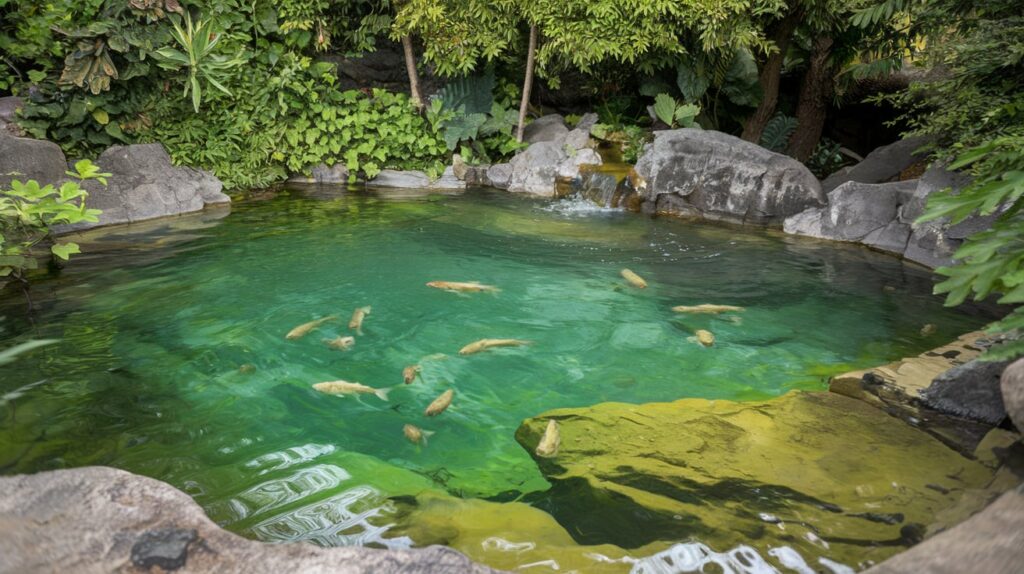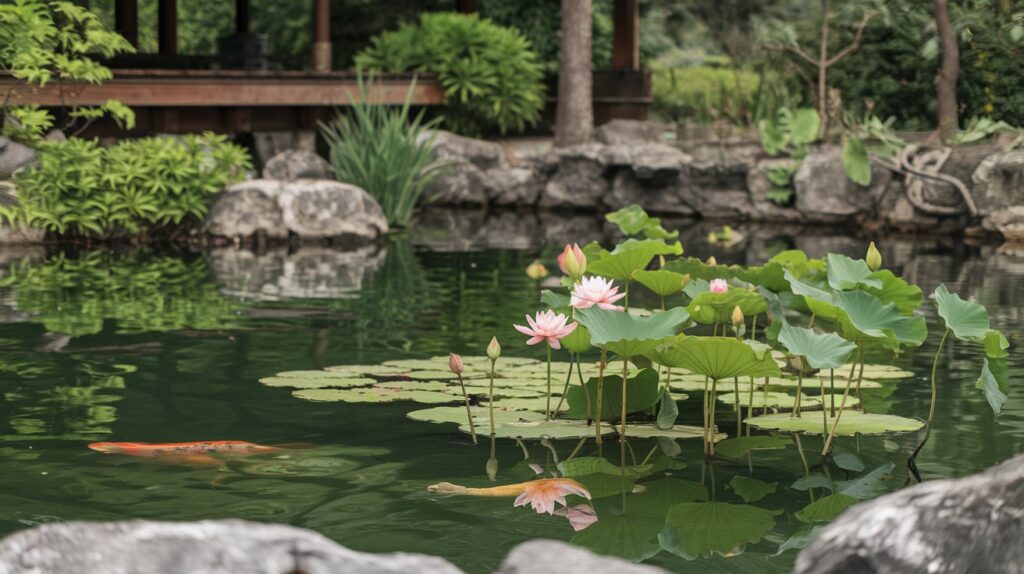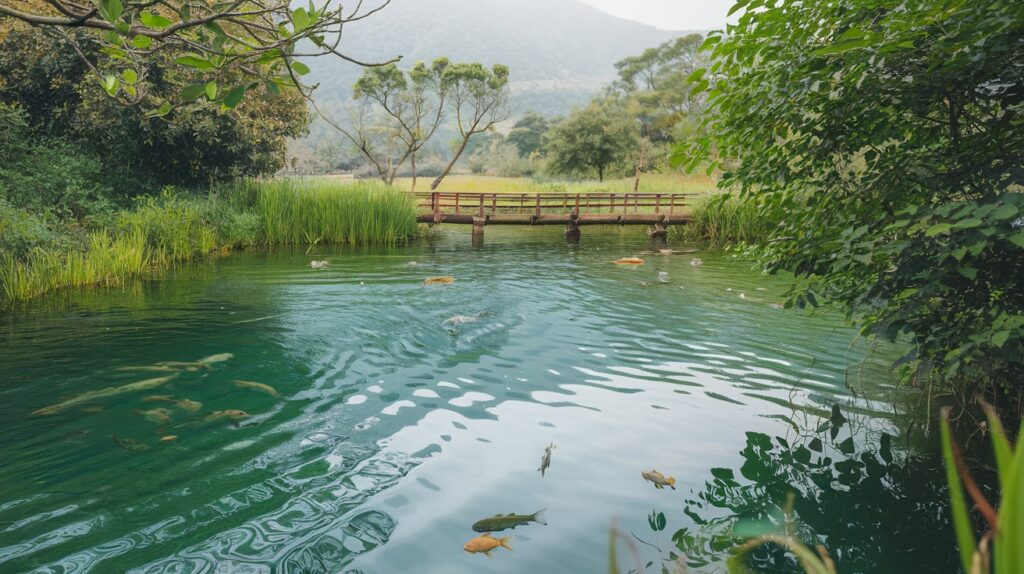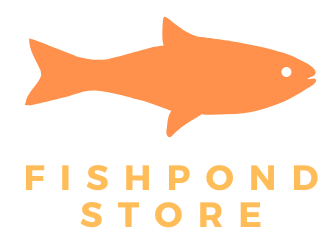Have you ever wondered what is the best size for a natural pond? There’s something so tranquil about a pond, don’t you think? Whether it’s for aesthetic purposes, wildlife support, or recreational use, choosing the right size of a pond is crucial to its health and functionality. In this article, I want to share my insights on how to determine the perfect size for a natural pond that fits your specific needs.
Understanding Natural Ponds
Natural ponds are beautiful ecosystems that provide a home for various plants and wildlife. They can be formed naturally through geological processes or made artificially to aid biodiversity. The beauty of a pond is not just in its appearance but also in the sheltered life it fosters. The first step in planning for a natural pond is understanding its role.
Natural ponds serve multiple purposes, such as:
- Wildlife Habitats: They support a variety of species, from frogs to birds, offering them water, food, and shelter.
- Ecosystem Services: Ponds help in water filtration, flood control, and groundwater recharge.
- Recreation: Many people enjoy fishing, swimming, and kayaking in ponds.
With that in mind, let’s get into what size will work best for you.

Factors Influencing Pond Size
When deciding on the size of your natural pond, several factors come into play. It’s more than just aesthetics; functionality, purpose, and environment need consideration.
Purpose of the Pond
What do you envision doing with your pond? The intended use is a significant factor in sizing. Here are some common purposes for natural ponds:
| Purpose | Recommended Size |
|---|---|
| Aesthetic Garden Feature | 100 to 200 square feet |
| Wildlife Habitat | 500 to 1,000 square feet |
| Recreational Use | 1,000 square feet and above |
| Water Supply | Varies significantly |
If I want a relaxing space for my garden, a smaller pond would suffice. However, if I’m creating an ecosystem or recreational area, I’d need to consider a larger expanse.
Location and Topography
The location of the pond plays a crucial role in its size. I’ve found that terrain can affect how large I can make the pond. Here are some considerations:
- Soil Type: Sandy or clay soils influence the pond’s stability and size. Clay retains water better, allowing a smaller pond.
- Slope: A gentle slope allows for a larger volume without needing extensive excavation.
- Sunlight Exposure: More sun encourages plant growth, which can affect the size as plants will need space to thrive.
I remember when I chose a location with a slight slope; it made it easier for me to manage the pond’s depth without worrying about excess excavation.

Water Source
The water source for the pond can also dictate size. Whether drawing from a natural spring, rainwater, or connecting to a nearby stream, the source impacts both the quality and quantity of water available.
- Natural Springs: If my pond is fed by a natural spring, I might consider a larger pond since it will constantly receive water.
- Rainwater Collection: Smaller ponds may be practical if relying solely on rain.
Desired Depth
Depth is another factor that’s just as crucial as overall size. A pond’s depth contributes to its thermal layers and affects aquatic life. Here are a few insights:
| Depth Range | Ideal Use |
|---|---|
| 1-2 feet | Shallow, ideal for wildlife |
| 3-5 feet | Balanced for fish |
| More than 6 feet | Good for maintaining temperature |
When I designed my pond, I aimed for varying depths to support diverse wildlife while ensuring the ecosystem remained balanced.
Local Climate
Understanding the local climate conditions can influence pond size. Not just temperature but the frequency of rainfall, evaporation rates, and seasonal changes all play a part.
- Hot Arid Climates: A larger pond might evaporate significantly faster, which would require a larger area to accommodate water loss.
- Temperate Climates: A smaller pond can retain water more effectively due to consistent rainfall.
In my experience, observing seasonal changes helped me determine how much water remained throughout the year and how that aligned with the size of my pond.
Calculating the Right Size
Now that I’ve gone through the various factors influencing pond size, it’s time to drill down to some calculations. I appreciate having a method to ensure my calculations reflect the pond’s intended purpose and features.
Basic Area Calculation
The formula to calculate the area of a pond is relatively simple. I often think in terms of dimensions:
[ text = text times text ]
For a circular pond:
[ text = pi times (text^2) ]
To visualize, let’s say I want a rectangular pond measuring 10 feet by 5 feet; the area would be:
[ text = 10 , text times 5 , text = 50 , text ]
I can now compare this area to my intended purpose.
Volume Calculation
The volume further narrows down my calculations. The total volume gives insight into the amount of water I’ll need to maintain, and it is crucial for aquatic ecosystems.
For a basic rectangular prism-shaped pond, the formula is:
[ text = text times text times text ]
If I were to take the previous example and say my pond would have an average depth of 2 feet:
[ text = 10 , text times 5 , text times 2 , text = 100 , text ]
This calculation helps me understand the quantity of water needed!

Practical Considerations
Even after calculating the area and volume, I find practical considerations affect the overall size. For instance, accessibility for maintenance or the surrounding landscape might require adjustment. Ensuring that I can access all parts of the pond makes it easier to care for over time.
Vegetation and Wildlife Support
Beyond just determining sizes, it’s essential to consider how vegetation and wildlife will interact with the pond. This plays a significant role in the pond’s health and ecology.
Importance of Native Plants
Native plants are like the backbone of a pond’s ecosystem. They provide habitat, food, and filtration for the water. When I select plants, I consider native species that will thrive in my climate and enhance the pond’s natural beauty.
Wildlife Considerations
The size of the pond also impacts the types of wildlife it can support. A smaller pond may attract frogs and insects, while a larger one might sustain fish and birds. In my pond, I have seen a delightful variety of frogs and dragonflies that add so much life.
Managing Ecosystem Balance
I constantly think about balance. Too much vegetation can lead to stagnation, while too little results in erosion. I explore techniques like planting buffer zones around the pond to regulate water flow naturally.

Long-term Maintenance
Once I’ve considered the perfect size, thinking about long-term maintenance is the next critical step. A well-maintained pond can significantly enhance the landscape and support wildlife over time.
Regular Water Testing
I always make it a point to test the water quality regularly. Parameters like pH, oxygen levels, and algae growth impact every aspect of the ecosystem. Testing helps me keep everything in check.
Cleaning and Maintenance
Maintaining a pond entails cleaning and occasional excavating to manage sediment build-up. I prioritize easement paths around the pond for maintenance to ensure I can perform these tasks without hassle.
Seasonal Adjustments
Seasonal weather impacts my pond’s ecosystem. In winter, I ensure there are openings in the ice to allow fish access to oxygen.
Managing Wildlife
I also consider how wildlife populations interact. Introducing species must be done thoughtfully, especially predatory fish that might disturb the balance.
Conclusion – What Is The Best Size For A Natural Pond
Deciding on the best size for a natural pond is more nuanced than it might seem. I find joy in creating a space that not only enhances my surroundings but also supports the local ecosystem. By considering factors like purpose, location, water source, depth, climate, and wildlife needs, I can find the perfect dimensions for my pond.
Ultimately, whether I want a small pond for tranquility or a larger aquatic ecosystem teeming with life, taking the time to thoughtfully plan ensures a thriving natural pond for years to come.
Remember, every pond is unique! As I continue embracing this journey, I look forward to seeing how it flourishes, reminding me of the importance of balance in nature.
